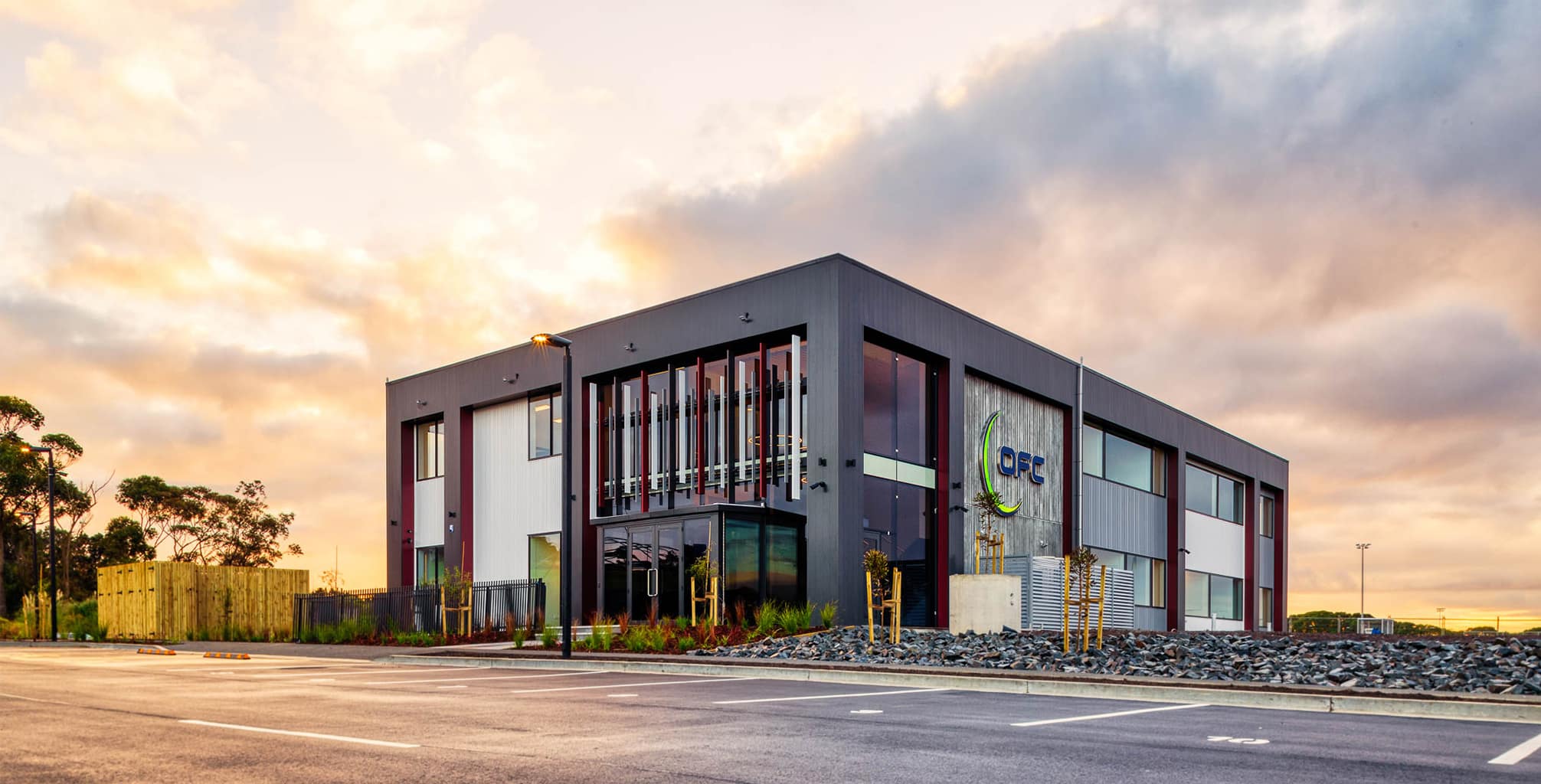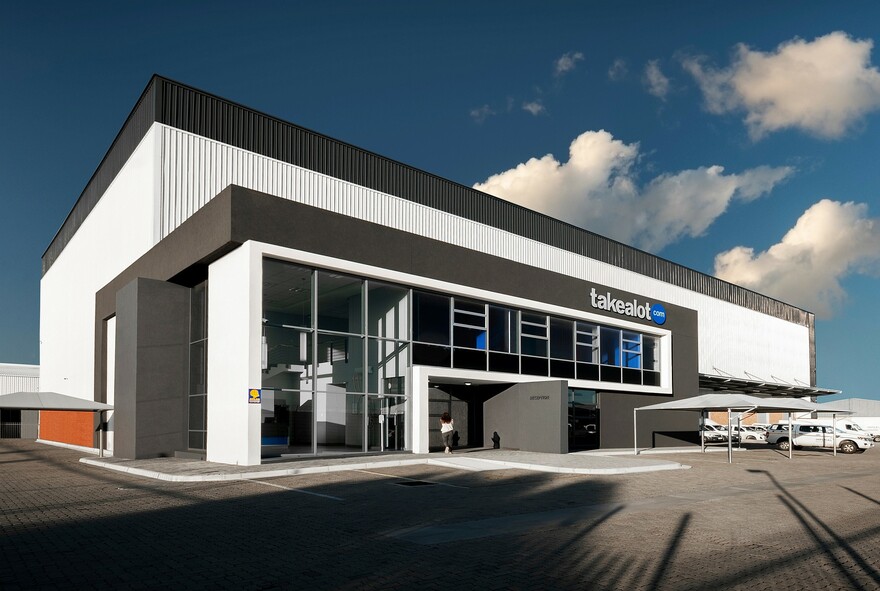Introducing the Comprehensive Solutions Offered by Commercial Architects for Modern Developments
Commercial Architects offer an essential function in modern advancement jobs. They mix layout aesthetics with functionality while sticking to regulative requirements. Their competence extends beyond simple building, incorporating sustainable methods and innovative technologies. As they navigate intricate zoning legislations, Architects work together with numerous stakeholders to bring visions to life. This multifaceted strategy raises questions concerning the progressing duty of Architects in shaping contemporary rooms and the impact of their work with future advancements.
Understanding the Duty of Commercial Architects in Modern Dope
In contemporary urban landscapes, Commercial Architects play a critical function fit useful and aesthetic spaces that meet diverse organization demands. Their know-how prolongs beyond simple style; they navigate complicated zoning laws, developing codes, and environmental guidelines. By working together with customers, they recognize specific requirements, guaranteeing that each job straightens with the customer's vision while also thinking about practical elements such as sustainability and cost-effectiveness. Commercial Architects are experienced at integrating cutting-edge technologies and materials right into their styles, enhancing both the performance and power efficiency of buildings. They carry out thorough site analyses to analyze the possible challenges and chances offered by an area. In addition, reliable communication with service providers and various other stakeholders is necessary, guaranteeing that the task proceeds smoothly from conception to completion. Eventually, Commercial Architects are important in creating spaces that not just fulfill practical objectives but also add to the general personality and vibrancy of urban environments.
Concept Layout: Transforming Ideas Into Reality
Concept design acts as a crucial phase in Commercial design, where cutting-edge layout solutions emerge from imaginative thinking. This process relies on joint ideation, uniting diverse viewpoints to fine-tune and enhance first concepts. As ideas form, they transform from abstract notions into substantial building facts.
Cutting-edge Design Solutions
Changing concepts into fact is the hallmark of ingenious style services in Commercial architecture. These services blend imagination with performance, dealing with the special needs of contemporary developments. By leveraging sophisticated technologies and lasting techniques, Architects craft areas that are not only aesthetically appealing yet also effective and versatile. Focus on customer experience drives the style procedure, making sure that atmospheres foster productivity and collaboration. Each job gain from a tailored method, where principles are carefully created to mirror the client's vision while taking into consideration future patterns. Ingenious design solutions likewise prioritize versatility, permitting modifications over time as organization requirements progress. Ultimately, these methods boost the total worth of Commercial spaces, making them critical in today's competitive landscape.

Collaborative Ideation Refine
Collaboration works as the backbone of the ideation process in Commercial style, cultivating imagination and innovation amongst varied stakeholders. Architects, clients, engineers, and neighborhood participants participate in vibrant conversations, making sure that all point of views are taken into consideration. This comprehensive approach enables for the expedition of numerous style principles, urging one-of-a-kind options that straighten with the project's vision. With workshops and conceptualizing sessions, ideas develop and improve, transforming first concepts into concrete styles. Technology additionally plays an essential duty, with tools such as Building Information Modeling (BIM) promoting real-time cooperation and modifications. Ultimately, this joint ideation procedure not just improves the layout outcome yet also grows a sense of ownership and investment amongst all events included, leading to successful Commercial growths.
Zoning Analysis: Browsing Regulations and Conformity
As developers commence on brand-new tasks, understanding zoning guidelines is crucial to guaranteeing compliance and avoiding expensive hold-ups. Zoning analysis plays an essential function in this process, as it includes assessing regional zoning regulations that dictate land use, developing elevation, thickness, and setbacks. Commercial Architects possess the know-how to browse these intricate laws, aiding clients recognize permitted uses and any type of essential differences.
Sustainable Layout Practices: Structure for the Future
Sustainable design methods are significantly necessary in the domain name of Commercial architecture, specifically as ecological concerns remain to rise. Architects prioritize environment-friendly materials, energy-efficient systems, and layout methods that lessen waste and environmental impact. Incorporating sustainable power sources, such as solar panels and wind turbines, permits structures to produce their own power and minimize dependence on fossil fuels.Furthermore, lasting design highlights the value of indoor environmental high quality. This consists of making use of all-natural light, boosting ventilation, and choosing safe products to improve owner health and performance. Environment-friendly roofings and living walls are additionally popular attributes that add to biodiversity and metropolitan cooling.Additionally, Commercial Architects often incorporate water preservation methods, like rainwater harvesting and drought-resistant landscape design. Via these cutting-edge approaches, they develop areas that not only fulfill contemporary requirements however additionally promote a lasting future, attending to the expanding demand for responsible growth in the modern world.
Task Monitoring: Ensuring Timely and Reliable Implementation
Reliable job administration is necessary for guaranteeing that Commercial architecture jobs are completed on time and within budget plan. This duty includes a range of duties, consisting of the control of various stakeholders, timelines, and sources. Commercial Architects utilize their competence to develop thorough job strategies that detail essential turning points and deliverables, enabling methodical progress tracking.Regular interaction among employee and clients is crucial, cultivating transparency and helping with timely decision-making. Threat administration methods are also employed to identify prospective obstacles early, allowing aggressive solutions to be established. By Read Full Article using advanced job monitoring devices, Architects can monitor task efficiency in real-time, making adjustments as essential to maintain effectiveness.
Interior Decoration: Creating Practical and Visual Rooms
Interior design plays a crucial function in boosting both functionality and aesthetics within Commercial rooms. Efficient room planning can maximize process and improve individual experience, while visual style principles add to a visually appealing atmosphere - commercial architects. Together, these elements produce rooms that are not only sensible however likewise inspiring
Room Planning Performance
While optimizing the utility of available space, Commercial Architects focus on space preparation effectiveness to create both functional and cosmetically pleasing atmospheres. This strategy entails cautious evaluation of the spatial layout to assure ideal use every square foot. Architects take into consideration factors such as workflow, access, and all-natural light to boost functionality. By strategically placing furnishings, devices, and workstations, they assist in motion and communication among individuals, advertising performance. In addition, zoning various areas for specific functions assists in taking care of noise and privacy, producing an unified environment. With effective room planning, Commercial Architects can transform restraints into opportunities, guaranteeing that each space meets the diverse needs of its owners while adhering to governing demands other and market criteria.
Aesthetic Layout Principles
Aesthetic layout principles play an essential duty fit settings that are not only useful yet likewise visually attractive. These principles guide Commercial Architects in producing spaces that resonate with customers while enhancing brand name identification. Crucial element consist of balance, percentage, and harmony, which function with each other to produce a cohesive appearance. Shade systems and materials are very carefully picked to evoke preferred feelings and support the general style. Furthermore, illumination plays a critical function, influencing state of mind and presence while highlighting architectural attributes. By integrating these principles, Architects guarantee that spaces are not only useful yet also inviting and inspiring. Ultimately, reliable aesthetic layout cultivates a favorable individual experience, urging interaction and satisfaction in Commercial settings.
Cooperation With Stakeholders: Cultivating Effective Collaborations
Effective partnerships in Commercial design depend upon effective collaboration with stakeholders, making certain that every voice is heard and valued. This collective approach involves interesting numerous parties, including customers, service providers, and neighborhood members, throughout the design and development procedure. By promoting open communication, Commercial Architects can attend to issues, collect understandings, and straighten the task's vision with stakeholder expectations.The assimilation of varied point of views improves imagination and technology, resulting in more functional and cosmetically pleasing styles. Regular conferences, feedback sessions, and workshops promote this dialogue, enabling Architects to adapt their strategies in feedback to stakeholder input. Furthermore, developing count on via transparency and accountability enhances these partnerships, resulting in a smoother job execution.Ultimately, the success of modern-day developments depends on the Architects' capacity to navigate and harmonize varying interests, developing a collaborative environment that promotes common objectives and shared success.
Often Asked Inquiries
How Do Commercial Architects Deal With Budget Plan Constraints Throughout a Task?

What Kinds of Software Do Commercial Architects Frequently Use?
Commercial Architects generally utilize software application such as AutoCAD for composing, Revit for Structure Information Modeling, SketchUp for 3D modeling, and job management tools like Microsoft Project to enhance partnership and enhance workflows throughout the layout process.
Can Commercial Architects Aid With Obtaining Financing for Projects?
Commercial Architects can assist in acquiring funding for tasks by preparing in-depth proposals, original site assisting to verbalize design visions, and supplying economic projections that can improve the probability of safeguarding required financing from capitalists or financial organizations.
Exactly How Do Architects Ensure Safety And Security Throughout the Building Refine?
Architects assure safety and security throughout construction by executing extensive style requirements, coordinating with designers, conducting normal site inspections, adhering to neighborhood policies, and promoting interaction among all stakeholders to mitigate dangers and advertise a protected workplace.
What Continuous Assistance Do Architects Provide After Task Completion?
After project conclusion, Architects supply continuous assistance with upkeep assessments, performance evaluations, and design modifications. They assure structures fulfill developing requirements, address possible concerns, and maintain conformity with guidelines, fostering a long-lasting connection with customers.